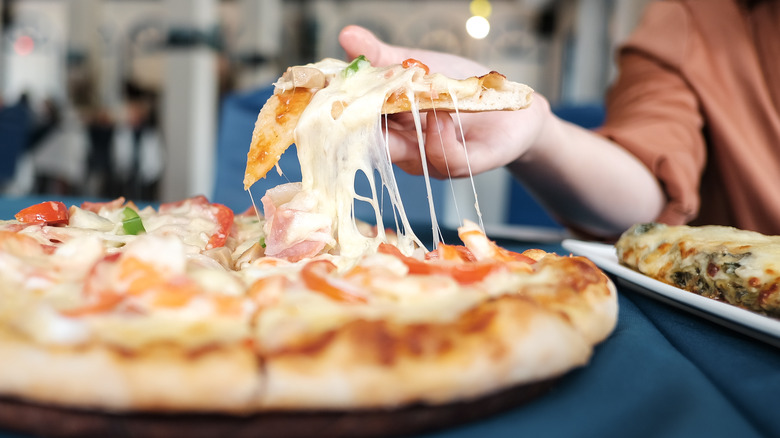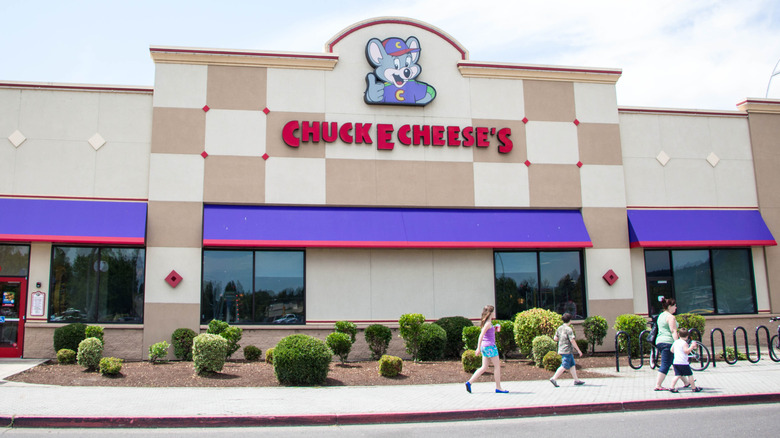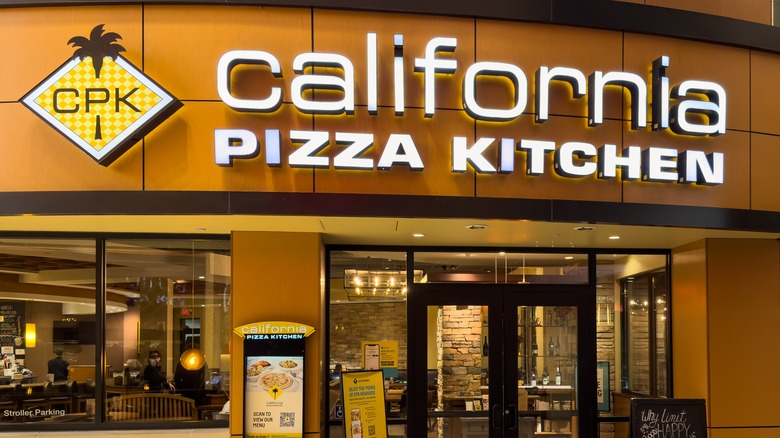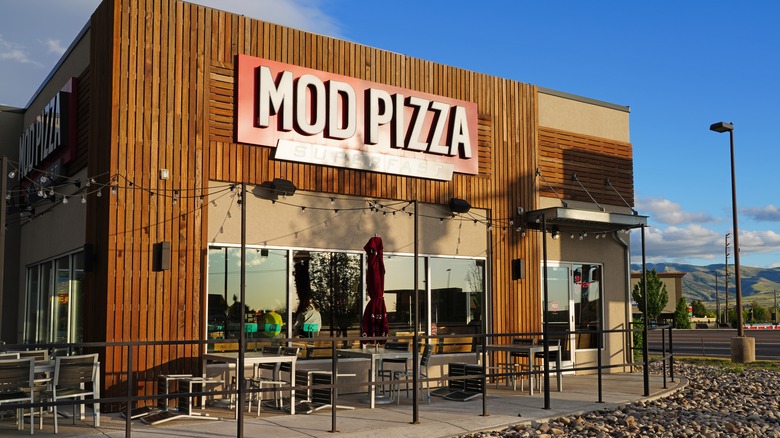Why Are All These Pizza Chain Restaurants Filing For Bankruptcy?
It's no secret that the economy has been in turmoil for the last few years, both nationally and globally. The lockdowns that were mandated due to the pandemic left many businesses scratching away at what little capital they had on hand in the hopes of surviving until the uncertainty was over. Many businesses didn't make it and, although the pace has slowed, there are still plenty of businesses reeling from that event. Combine those trying times with abnormally high inflation, and you've got yourself a recipe for bankruptcy.
An interesting pressure point in all of this appears to be pizza chain restaurants. Even if many people feel restaurant price hikes are justifiable in light of these economic pressures, people are still going to eat out less as they look for ways to tighten their fiscal belt. This has led to an alarming rise in bankruptcy filings from pizza chains that were more or less thriving just a few years ago.
Although the details will differ from company to company, these bankruptcy proceedings can be attributed to a combination of over-leveraged balance sheets, a lengthy shutdown that demolished incoming sales, and the rising cost of food and other goods necessary to run these companies. It appears the worst is behind us, but don't forget that these same economic forces decimated small businesses across the nation. Let's take a closer look at three of the struggling pizza chains: Chuck E. Cheese, California Pizza Kitchen, and MOD Pizza.
Chuck E. Cheese survived its 2020 bankruptcy, sort of
Whatever liquid assets the Chuck E. Cheese company had available when the COVID pandemic reared its ugly head weren't enough to last very long. The company filed for Chapter 11 bankruptcy in June 2020, just a few months into lockdowns. After a year of corporate restructuring, Chuck E. Cheese emerged in 2021 with $700 million in debt paid off and new leadership at the helm.
Earlier in 2024, Chuck E. Cheese began testing tiered membership programs as a way to drum up sales. But no matter the methods the company has tried, it apparently hasn't been working all that well. There are now rumors the company is working with Goldman Sachs to facilitate its sale, possibly to the competing Dave & Busters Entertainment. It's unclear what will happen to this beloved children's pizza party parlor, but it has certainly fallen on unstable ground.
California Pizza Kitchen was also hit hard by the pandemic
A similar story has played out with California Pizza Kitchen, which filed for Chapter 11 bankruptcy just one month Chuck E. Cheese in July 2020. Keep in mind that a Chapter 11 bankruptcy allows corporations to partially protect its assets as it work to repay its creditors. The practice can get quite technical, but it helps to think of it more as a type of financial reorganization rather than an all-out liquidation, which is why these bankrupt pizza chains are still in business.
California Pizza Kitchen's rebound from bankruptcy didn't take quite as long, having officially ended on November 23, 2020. The ordeal was far from painless, though, having closed down 31 different locations in the process. The company brought in a new CEO in October 2022, who appears to be navigating the transition out of the economic uncertainty of the pandemic fairly well, though data suggests that food inflation is here to stay.
MOD Pizza is doing its best to avoid bankruptcy, but success is uncertain
Rumors have been floating around for a few months now that MOD Pizza was set to become the next domino to fall into bankruptcy after shuttering 26 locations in 2024. In a surprise twist, the company has instead sold itself to the Los Angeles-based Elite Restaurant Group in the hopes of staving off a bankruptcy filing. Whether the acquisition of MOD Pizza will ultimately save the brand remains to be seen. We should at least expect some form of restructuring in the coming months because of it.
This comes just months after the announcement of a new MOD Pizza CEO who took the position back in January of 2024. What role the new CEO played in the sale is unclear, and very few details have been publicly released over the terms of the sale agreement. One thing is for certain, store closures are almost sure to follow.



